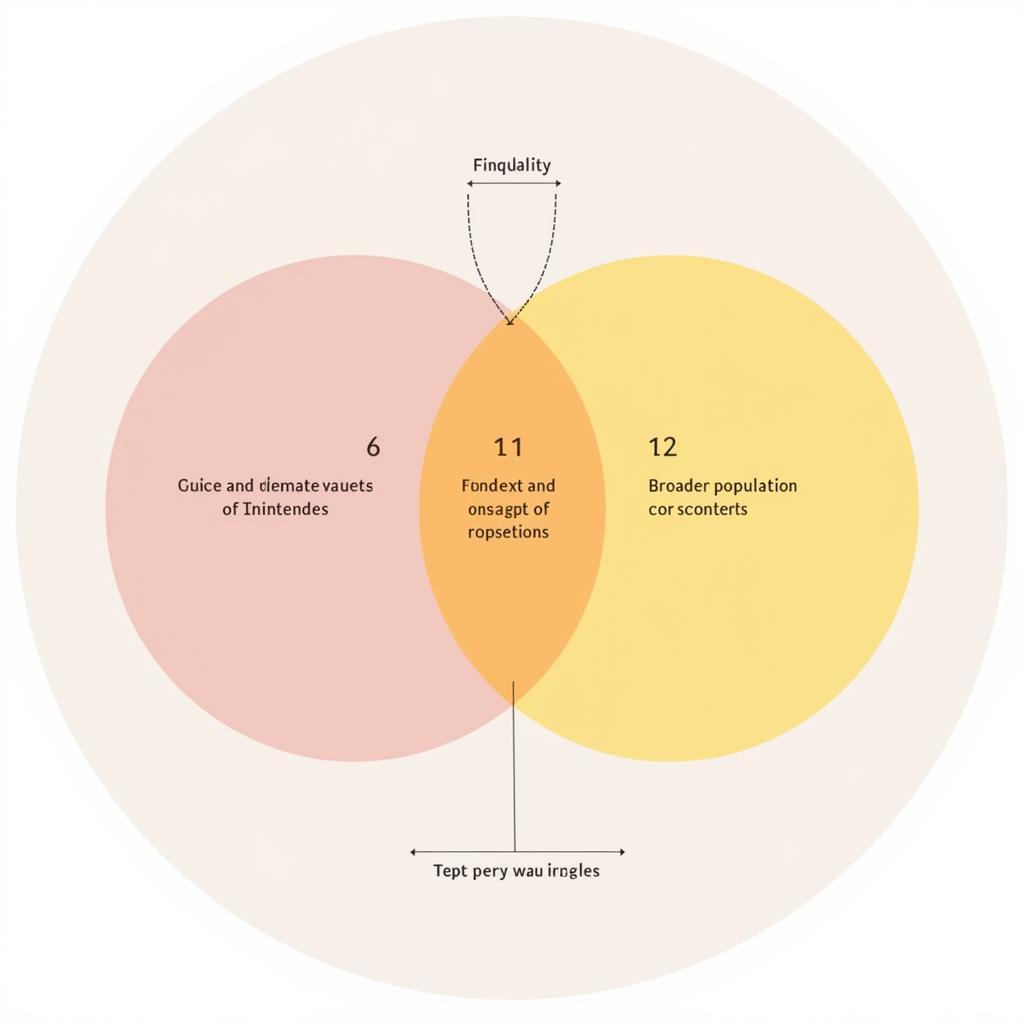Qualitative research in paranormal investigation often relies on rich, detailed accounts of experiences rather than large datasets. While this can limit generalizability, random sampling can still play a crucial role in strengthening the validity and reliability of findings. This approach helps ensure that the experiences studied accurately represent a wider range of phenomena and aren’t simply isolated incidents.
Exploring the Unknown: Why Random Sampling Matters
Imagine investigating claims of haunted locations. If you only focus on sites with long-standing reputations, you might miss subtle but crucial variations in hauntings reported in lesser-known locations. Randomly selecting from a pool of reported hauntings, regardless of their fame, could unveil new patterns and challenge existing assumptions.
This principle applies to various aspects of paranormal research, from analyzing EVP recordings to studying psychic abilities. By incorporating random sampling, researchers can minimize bias, ensuring that the experiences studied represent a diverse range of phenomena and provide a more comprehensive understanding of the paranormal.
Navigating the Paranormal: Applications of Random Sampling
Let’s delve into specific examples of how random sampling can be employed in qualitative paranormal research:
-
EVP Analysis: Instead of focusing solely on clear EVP recordings, randomly selecting from a pool of recordings, including those with faint or unclear voices, can help identify new patterns in electronic voice phenomena. This approach minimizes confirmation bias, where researchers may unintentionally favor evidence that supports pre-existing beliefs.
-
Psychic Ability Studies: When researching individuals claiming psychic abilities, randomly selecting participants from a pool of applicants, rather than only those with compelling testimonials, ensures a more representative sample. This reduces selection bias and allows for a more objective assessment of psychic phenomena.
-
Dream Telepathy Experiments: In studies exploring dream telepathy, randomly assigning participants to “sender” and “receiver” groups, and randomly selecting the target images, helps minimize potential biases and strengthens the validity of the findings.
Unveiling Hidden Truths: Benefits and Considerations
 Transferability in Qualitative Research
Transferability in Qualitative Research
Incorporating random sampling into qualitative paranormal research offers several advantages:
-
Increased Validity: By ensuring a more representative sample, random sampling increases the likelihood that the findings accurately reflect the broader phenomenon under investigation. This enhances the validity of the research, making the conclusions more credible.
-
Reduced Bias: Random sampling helps mitigate various forms of bias, including selection bias and confirmation bias. This leads to more objective and reliable findings.
-
Enhanced Transferability: While not the primary focus of qualitative research, random sampling can improve the transferability of findings to other contexts or populations. By studying a more representative sample, the insights gained are more likely to hold true in different settings. Learn more about what is transferability in qualitative research.
However, there are also challenges to consider:
-
Sample Size Limitations: Achieving a sufficiently large and diverse sample size can be challenging in paranormal research due to the often-limited availability of participants or data.
-
Ethical Considerations: When researching sensitive topics like near-death experiences or psychic abilities, ensuring the anonymity and well-being of participants is paramount.
-
Defining the Population: Clearly defining the target population can be complex. For instance, if studying hauntings, is the population all haunted locations or a specific subset?
Random Sampling: A Tool for Unlocking the Paranormal
While random sampling might seem counterintuitive in the realm of the unexplained, it can be a powerful tool for uncovering patterns and insights. By incorporating this approach into qualitative research, paranormal investigators can enhance the rigor of their studies and contribute to a more nuanced understanding of the unknown. Just as a sample market research can provide insights into consumer behavior, random sampling in Paranormal Research can illuminate the complexities of the unseen world.
If you’re intrigued by the possibilities of qualitative research in paranormal investigation, consider exploring resources on research proposal sociology example and purposeful sampling qualitative research. These resources can guide you in designing rigorous and insightful studies. Additionally, you can delve into various research methodology sample paper to understand how different methodologies can be applied in this fascinating field.
Random sampling, while not a magic bullet, offers a systematic and objective lens through which we can approach the mysteries of the paranormal. By embracing this approach, we can move beyond anecdotal evidence and towards a more scientific and insightful exploration of the unexplained.